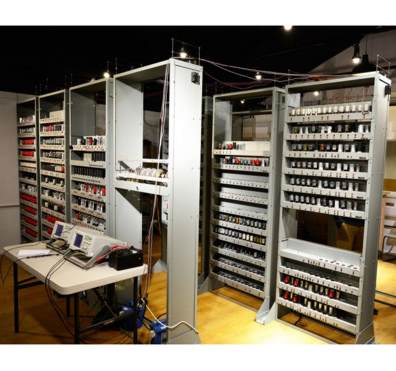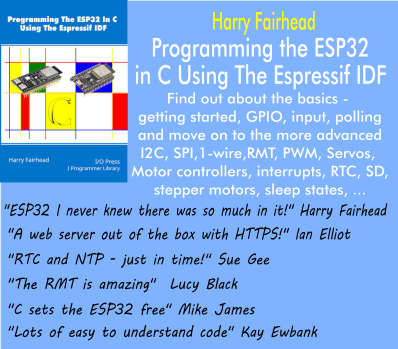| EDSAC Display Officially Opened |
| Written by Sue Gee |
| Friday, 28 November 2014 |
|
EDSAC, the Electronic Delay Storage Automatic Calculator, was originally built immediately after World War II at the University of Cambridge, England. It is now being re-built at the UK's National Museum of Computing. The project, which we have reported on previously, has been underway since 2012 and reached an important milestone this week when key parts of the reconstruction were switched on for the first time. They were demoed at a ceremony at which the reconstruction was unveiled by Hermann Hauser, EDSAC Project Chairman and co-founder of Acorn Computers and its later spin-off Advanced RISC Machines (ARM).
EDSAC was room-sized with over 120 two-meter high floor-standing chassis. By the time it was scrapped in the late 1950s, only three of these chassis survived. The rebuild is therefore having to recreate parts - although not always entirely authentic ones. The original EDSAC used mercury-filled tubes for memory, but in the interests of safety, the replica uses an alternative non-toxic substance. A team of around 20 volunteers is involved in the rebuild, which is on target for completion by the end of next year. By February this year, all 12 of the tall metal racks which support the individual chassis of electronics had been manufactured and installed. Each rack can hold up to 14 chassis and prior to the official opening 70 of the total of 142 had been installed and tested.
According to an EDSAC progress report, workshops, sheds and even kitchen tables across the country had been called into action to build and test each chassis. Each takes a skilled volunteer five to ten days to assemble, wire and check, so that means that the chassis assembly work alone for the whole of EDSAC will have taken between three and four person-years. In this video project leader Andrew Herbert provides a tour of the task of commissioning the reconstruction.
At the official opening of the exhibit, several key elements of EDSAC were demonstrated. With the help of a very modern piece of kit, a Raspberry Pi, Bill Purvis showed how a program would be input before the advent of keyboards and how the result would be output before screens became commonplace. Peter Linnington revealed how, at the start of the computer age, delay lines were used as stores. As the climax, Chris Burton switched on the EDSAC clock, the beating heart of the machine. Computer historian Martin Campbell-Kelly also gave a preview of what is in store for the display by outlining the importance of EDSAC in marking the beginnings of computer programming. He revealed plans for young people to create and run their own programs on one of the world’s most influential early computers one the reconstruction is complete. More Information
Related ArticlesEDSAC Reconstruction Demoed To Celebrate Wilkes Centenary On this day in 1949 - EDSAC performs stored-program calculation To be informed about new articles on I Programmer, sign up for our weekly newsletter, subscribe to the RSS feed and follow us on Twitter, Facebook or Linkedin.
Comments
or email your comment to: comments@i-programmer.info |
| Last Updated ( Thursday, 05 May 2022 ) |


